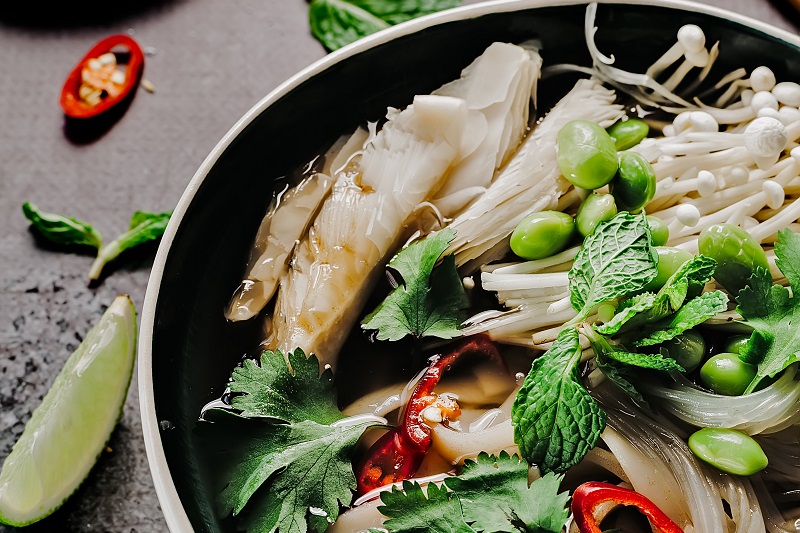What food should you eat and what should you avoid when you have gout?
- The food you should avoid
- The food you should eat
- The food you can eat in moderation
Gout is a much more painful form of arthritis which happens when the body has too much uric acid. The uric acid then builds up and forms crystals in your joints. Gout usually begins in your big toes, but it can spread to other joints in your bodies such as the wrists, knees, elbows, fingers, and ankles if not treated with medicine. Like diabetes, gout can be avoided by eating a proper diet.
Your body produces uric acid once it breaks down a substance called purine. While your body makes uric acid too, it is present mostly in a lot of the food you eat. The crystals that collect in your joints once you have gout can also cause painless lumps called tophi.
Gout used to be thought of as the disease of the wealthy because it was often associated with eating a lot of shellfish and eating red meat as well as drinking alcoholic beverages. Nowadays, the amount of money does not matter when it comes to gout, rather, it all depends on the food and drinks you consume.
There is no one specific diet that will definitely prevent flare-ups, but strictly monitoring your diet can still make a world of difference. Here are some of the food you should eat and you should avoid when you have gout.
The Food You Should Avoid
If you feel like you are susceptible to sudden attacks of gout, the culprit might be high-purine food. Generally, you should try and avoid food that contains more than 200 mg of purines per 100 grams (3.5 ounces).
You should also avoid food with high fructose as well as moderately-high-purine food which can contain 150-200 mg of purines per 100 grams. While their purine content is lower, it is still possible for them to trigger a gout attack.
Here are a few common foods that are moderately-high and high in purine, as well as food that have a high amount of fructose:
- Game meats - some examples include veal, venison, and pheasant
- All organ meats - these include kidneys, sweetbreads, brain, and liver
- Fish - some examples include mackerel, tuna, trout, herring, haddock, anchovies, sardines, and more
- Other seafood - including crab, shrimp, scallops, and roe
- Yeasts - including brewer’s yeast, nutritional yeast, and other yeast supplements
- Added sugars - these include high-fructose corn syrup, honey, and agave nectar
- Sugary beverages - especially sodas and fruit juices
In addition, refined carbohydrates such as cakes, cookies, and white bread should also be avoided. Even though these foods are not high in fructose or purines, they are low in nutrients which may end up raising your uric acid levels.

The Food You Should Eat
There are still plenty of foods you can enjoy even though a gout-friendly diet eliminates a lot of food. Foods which are considered low purine only contain less than 100 mg of purines for every 100 grams or 3.5 ounces.
Generally, foods with low purine are safe for people with gout to consume. These include:
- Vegetables - all vegetables are fine for consumption, including peas, mushrooms, eggplants, dark green leafy vegetables, and potatoes
- Fruits - all fruits are typically fine for gout, especially cherries which can even help prevent attacks by reducing inflammation and lowering your uric acid levels
- Nuts - all nuts and seeds should be safe to eat
- Legumes - all legumes are fine, including beans, soybeans, tofu, and lentils
- Dairy products - while all dairy is generally safe, low-fat variations appear to be especially beneficial for people with gout
- Eggs
- Whole grains - these include brown rice, barley, and oats
- Beverages - aside from water, tea and coffee are also ideal
- Plant-based oils - these include coconut, olive, flax, and canola oil
- Herbs and spices - all herbs and spices are safe to eat
The Food You Can Eat in Moderation
Most meats can be eaten in moderation besides the game meats, organ meats, and certain fish mentioned above. Although you should still try and limit yourself to 115-170 grams or four to six ounces of meat a few times per week.
Some of these fish and meat contain a moderate amount of purines which is considered to be 100 to 200 mg per 100 grams. Therefore, eating too much of these can still trigger a gout attack.
- Meats - these include beef, pork, lamb, or chicken
- Other fish - canned or fresh salmon typically contain lower levels of purines than most other fish.
Key Takeaway
A healthy diet can help control how much uric acid is in your system. But just like diabetes, taking medicine for gout may still be needed in order to prevent any future attacks.
Remember to consult with your doctor before you begin your gout-friendly diet and ask him or her about all of your options for treatment.